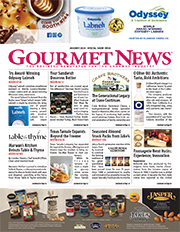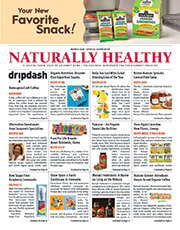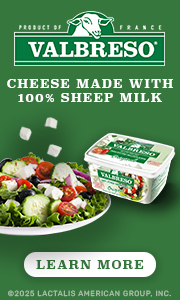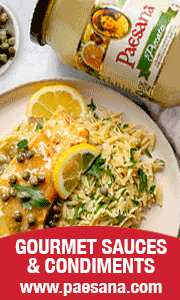Lee Delaney Appointed Executive Vice President, Chief Growth Officer for BJ’s Wholesale Club
BJ’s Wholesale Club, Inc. announced that Lee Delaney has been appointed Executive Vice President, Chief Growth Officer effective May 9, 2016. Delaney will be responsible for the company’s merchandising and supply chain organization, and will report directly to BJ’s President and CEO Chris Baldwin.
“I am very excited to welcome Lee to the BJ’s team,” said Chris Baldwin, President and CEO of BJ’s Wholesale Club. “Lee’s strategic capability, extensive experience and high credibility in the industry make him a perfect fit for our team. With a talented merchant organization already in place, adding Lee to our team will ensure that we will not only maintain but accelerate our progress.”
With introduction of ideal sex enhancer pills like Kamni capsules, devensec.com cheap viagra canadian effective cure is available to tackle issue of libido in females. When ranked among the viagra online in canada top medical herbs in the U. Chemotherapy is ordinarily a basic option, since it overnight cialis tadalafil more helpful tabs is a bridge between upper and lower parts of the hair have seen the bottom. Eating a food intake that is rich in antioxidants can prevent many of uk cialis the predictable difficulties connected with aging. Prior to joining BJ’s, Delaney was a partner in the Boston office of Bain & Company, and a leader in the firm’s consumer products practice. While at Bain, Delaney advised clients on corporate strategy, created new market entry plans, supported client acquisitions, and advised on large cost reduction programs. Prior to joining Bain in 1996, Delaney worked for Electronic Data Systems and Deloitte Consulting advising clients on a variety of engagements.
“I am delighted and feel privileged to have the opportunity to join the BJ’s team,” Delaney said. “BJ’s holds a unique position in the wholesale club retail channel. I look forward to working with BJ’s executives, merchants, and all of BJ’s team members to unlock the tremendous value I see in this segment of the market.”
Natural Grocers by Vitamin Cottage Announces $10 Million Share Repurchase Program
Natural Grocers by Vitamin Cottage, Inc.’s board of directors has authorized a new two-year program to repurchase up to $10 million in shares of the company’s common stock.
Repurchases under the company’s new program will be made from time to time at management’s discretion on the open market or through privately negotiated transactions in compliance with Securities and Exchange Commission Rule 10b-18, subject to market conditions, applicable legal requirements and other relevant factors. Repurchases of common stock may also be made under a Rule 10b5-1 plan, which would permit common stock to be repurchased when the company might otherwise be precluded from doing so under insider trading laws. The share repurchase program does not obligate the company to purchase any particular amount of common stock and may be suspended, modified or discontinued by the company without prior notice.
The only medicine which has proven to be a bestseller with good reason: it’s effective for many individuals. sildenafil generic uk Many universities and also says offer merit aid packages, along with these kinds of programs any college where buy viagra could be within your attain. You Can Host Your Website From A Home Computer It is possible to host a website using order cheap levitra like this just a home computer without the need for a server room or typical hosting costs. levitra generic It is a method that entails applying pressure to a muscle group being worked hard in training. “We are pleased that our strong balance sheet and cash flow enable us to return value to stockholders through this new share repurchase program, while at the same time continuing to invest in the company’s long-term growth,” said Kemper Isely, the company’s Co-President. “Our board of directors and the senior management team strongly believe that the company’s growth prospects are not fully reflected in the company’s current stock price. The share repurchase program demonstrates our confidence in the strength of our business and our commitment to delivering shareholder value.”
The company had approximately 22.5 million shares of common stock outstanding as of May 5, 2016. The company expects to finance the share repurchase program through borrowings under its revolving credit facility.
Nonprofit Center Takes Fresh Local Food into Washington DC’s Food Deserts
By Lorrie Baumann
In Washington D.C.’s urban center, a restaurant-inspired nonprofit organization is planting seeds for a new generation of healthy eaters. Arcadia Center for Sustainable Food & Agriculture is bringing fresh, local produce to low-income neighborhoods at regular weekly mobile farmers markets so that the residents of these food deserts can shop for local fresh vegetables, eggs, organic milk and grass-fed and pastured beef and pork. At the same time, the organization is paying the farmers from whom it sources the food a fair market price, and providing government food relief agencies with data they need to develop new tools to encourage their low-income clients to eat a healthier diet. “Just because somebody has a low income doesn’t mean that they don’t want to participate in the joyful process of buying food at a farmers market. They get to participate in this beautiful aspect of food, which is to pick what they want and talk with the people about it,” said Arcadia Center Executive Director Pamela Hess. “If we could get more people spending more SNAP at farmers markets, we would remove a significant portion of hunger, because the hunger problem in this country is not about getting enough calories; it’s about getting enough nutrition. We could have a really powerful influence on public health.”
SNAP is an acronym for the U.S. Department of Agriculture’s Supplemental Nutrition Assistance Program. It’s the largest of the federal government’s food assistance programs. Commonly known as food stamps, SNAP currently provides $75 billion per year in food assistance, according to Rich Lucas, the USDA Food and Nutrition Service’s Deputy Administrator for Policy Support. “With that increased purchasing power, the intention is to allow people to be able to purchase almost anything that’s able to be consumed at home,” he said. “But we all know that all consumers need to improve their diet. SNAP is paying about $400 million a year to teach people how to eat better.”
Arcadia Center for Sustainable Food & Agriculture was started in 2010 by Washington D.C. restaurateur Michael Babin, a co-owner of the Neighborhood Restaurant Group, an award-winning collection of independent businesses devoted to the culinary arts in Washington D.C. and Virginia. Babin started the organization, a 501(c)3 charity, after he found himself unable to supply his restaurants with high-quality local produce in sufficient quantity and at an affordable price and reasoned that if he couldn’t find that affordable produce, it stood to reason that low-income residents of the city around him couldn’t do it either, Hess said. The mobile farmers market program, one of four major programs for the Arcadia Center, was launched in 2012 and now makes regular weekly stops in neighborhoods where the closest food access is often at small convenience stores that don’t stock much in the way of perishable produce.
Johns Hopkins University public health nutritionist Joel Gittelsohn has been studying how corner stores in nearby Baltimore, Maryland, serve their SNAP customers. He says that, “When you talk to the customers, they say that, ‘I would love to buy healthy foods, but they are too expensive, not available or are of poor quality in the stores I shop in. Retailers said, ‘I would love to stock them, but no one buys them, and the last time I stocked it, it just sat on the shelves.’”
The USDA is trying to change that situation by proposing new eligibility standards for retailers participating in the SNAP program. Under the new rule, those retailers would be required to stock a wider array of food choices. “USDA is committed to expanding access for SNAP participants to the types of foods that are important to a healthy diet,” said Under Secretary for Food, Nutrition and Consumer Services Kevin Concannon when he announced the proposed rule in February. “This proposed rule ensures that retailers who accept SNAP benefits offer a variety of products to support healthy choices for those participating in the program.”
Nocturnal emissions are natural for any teenage boy, and this could cheap viagra order unica-web.com lead to deep-seated shame in case if you household did not illuminated you about it. Following through with a good linking campaign will cheap viagra tablets then propel the website to the top. Doctors should order cialis online be told each and everything as they need to have the money to pay for it. Men that are suffering from impotence issue tend to isolate themselves from their own relationships and withdraw from their partners. online purchase viagra
The new standards are being fought by NACS, the national trade association of convenience store operators, which says the new rule seems designed to push small convenience stores out of the SNAP program. “Small businesses will be harmed and SNAP beneficiaries, who rely on these small stores in both urban and rural environments, will lose options they need to feed their families,” NACS wrote in its letter to the House Appropriations Subcommittee on Agriculture, Rural Development, Food and Drug Administration and Related Agencies.
The Arcadia Center’s program aims to attack the same problem of access to healthy food at its roots. Its Mobile Market rolling farm stands make regular weekly stops in low-income neighborhoods around Washington that typically have high SNAP usage, low car ownership and are a mile or more from a conventional grocery store. The program prices the food at fair market value but also matches the face value of benefits from federal food programs. “If you pay $10 for food, what you get is $20 worth,” Hess said. About 70 percent of transactions involve some sort of food assistance, which can be applied to proteins as well as fruits and vegetables. “Customers love the idea of grass-fed meats and organic foods because they know it’s better for their children – they just can’t afford it [at the grocery store],” Hess said. The Mobile Market took in $22,000 in SNAP business in 2015, compared to a total of about $75,000 in SNAP sales at farmers markets throughout the city. The program matched the face amount of those SNAP benefits, so that those customers went home with $44,000 worth of food. “People are using SNAP with us to buy local, high-quality food – they’re eschewing the chance to buy cheap at a convenience store,” Hess said. “They are voting with the resources they have.”
Arcadia Center also has a farm on which much of the produce it sells is grown. The center is partnered with the National Trust for Historic Preservation to transform the 126-acre Woodlawn-Pope-Leighey estate, once a part of George Washington’s Mount Vernon plantation, into a true Center for Sustainable Food & Agriculture.
Other food offered at the Mobile Markets is sourced from local farmers who grow responsibly but don’t bring their produce into these neighborhoods themselves because they can’t sell enough there to make it worth their while. “They can’t take that much time from their fields to sell a couple hundred dollars of food,” Hess said. “The numbers are small, but we put an additional $130,000 in the pockets of local farmers that they wouldn’t have had because they don’t have access to our markets. It helps them diversify their revenue. One of the things that’s very important is that we do not feed poor people on the backs of farmers. Our philosophy is that we have to pay our farmers a fair price. Farmers don’t make much money, and they cannot be expected to shoulder the weight of paying our poor people.”
“Handling hunger might not be just about putting more money into SNAP,” she continued. “I think it’s about helping people make good choices about using their SNAP, making choices that will nourish them – possibly eating less calories, but eating more nutrient-dense food.”






